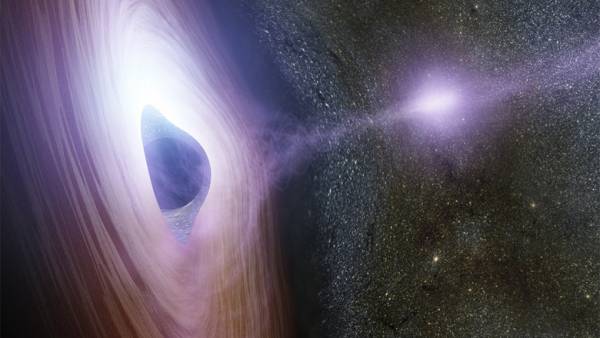Black holes control the star formation in larger galaxies
A group of scientists from USA, Germany and Spain have found that supermassive black holes stop the star formation, which occurs in large galaxies. The results of their work were published in the journal Nature.

In young galaxies new stars appear very quickly, but as soon as the galaxy formed the end, this process is terminated. It is affected by a supermassive black hole, which is in the center of each large galaxy which is millions of times greater than the Sun. It exerts gravitational effects on the stars in the galaxy and sometimes enhances the radiation from the active nucleus of the galaxy. Scientists believe that this energy and turns off the star formation by heating and dispersing gas, which would become a star as soon as cold.
The authors have studied massive galaxy where the Central black hole mass has already been measured. To understand the evolution of these galaxies, scientists have analyzed the spectrum of their radiation, using a telescope Hobby-Eberly. When comparing the results, the authors saw that the formation processes of galaxies with different mass of the Central black holes are very different. The astronomers found that these differences were associated only with the mass of the black hole, not the size of the galaxy or its morphology.
In galaxies of equal mass but with different mass of their Central black holes, the process of star formation ended earlier where the black holes were more massive and Vice versa. This means that the appearance of stars in galaxies with smaller mass Central black holes flowed longer.Ignacio Martin-Navarreonda of physical and mathematical Sciences, the employee of University of California Santa Cruz
The authors note that earlier it was impossible to achieve such results, because the time of occurrence of all processes is very different: stars can be formed for hundreds of millions of years, while the energy emission of the active nucleus of the galaxy can occur in a shorter time. Such kernels differ from each other, and their characteristics depend on many factors: the size of the black hole, the level of accretion of material falling into the black hole, and many others.